windows
Saints Row: The Third
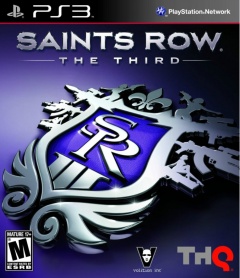 Saints Row 2 was already over the top. After an epic prison bust you then shoot up a courthouse and spray poop on rich people’s homes. It was crazy and pretty fun, and seemed worth playing beyond the first hour just to see what the developers could cook up.
Saints Row 2 was already over the top. After an epic prison bust you then shoot up a courthouse and spray poop on rich people’s homes. It was crazy and pretty fun, and seemed worth playing beyond the first hour just to see what the developers could cook up.
Volition wanted to go bigger though, so they made Saints Row: The Third. Within days of release, the game was already famous for one of its weapons: The Penetrator, a giant purple dildo with realistic... dildo physics. But from my time with the game, I can promise you they really went to town with an adrenaline-pumping, action set-piece heavy first hour that simply blows the offerings Saints Row 2 put up.
So let’s take a look at the first hour of Saints Row: The Third, with this hour’s minute by minute section being sponsored by the absurdity of Volition, highlighting the crazy levels the game goes beyond even its predecessor.
Tales of Monkey Island: The Trial and Execution of Guybrush Threepwood
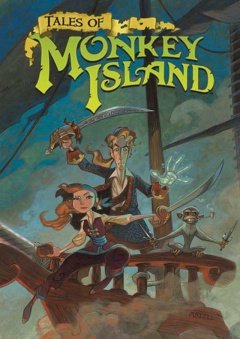 After the excellent Lair of the Leviathan episode, I was totally expecting the quality to fall in back to Tales of Monkey Island’s previous levels, good comedy, but not Monkey Island comedy. Thankfully, The Trial and Execution of Guybrush Threepwood manages to sustain most of the momentum of Leviathan in a well written romp that sets out a few pretty unique puzzles for our hero.
After the excellent Lair of the Leviathan episode, I was totally expecting the quality to fall in back to Tales of Monkey Island’s previous levels, good comedy, but not Monkey Island comedy. Thankfully, The Trial and Execution of Guybrush Threepwood manages to sustain most of the momentum of Leviathan in a well written romp that sets out a few pretty unique puzzles for our hero.
So far I’ve really been enjoying Tales of Monkey Island, it isn’t as good as the first three games in the series, but is really well done as an episodic adventure. Breaking out the island hopping into their own chapter has always fit well with Monkey Island, and allows the writers to create more natural cliffhangers and mini-conclusions.
The Trial and Execution of Guybrush Threepwood features a few of its own surprises, which I’ll definitely spoil in the following few paragraphs, if you’re reading this far I guess I’m assuming you’ve either already played the season or don’t care about spoilers at this point.
Borderlands 2
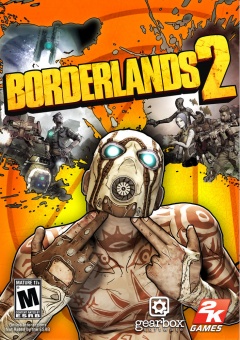 The original Borderlands was a breakout hit for Gearbox Software in 2009. The cel-shaded mission-driven FPS-meets-Diablo-style super-hyphenated lootfest was a quirky and endearing departure from more serious franchises like Halo, Call of Duty, and Medal of Honor. Instead of pushing the same "OMG 40 modes of multiplayer!" angle that had gotten so popular, it chose to design around the concept of 4 player co-op gameplay. And it did so with relish.
The original Borderlands was a breakout hit for Gearbox Software in 2009. The cel-shaded mission-driven FPS-meets-Diablo-style super-hyphenated lootfest was a quirky and endearing departure from more serious franchises like Halo, Call of Duty, and Medal of Honor. Instead of pushing the same "OMG 40 modes of multiplayer!" angle that had gotten so popular, it chose to design around the concept of 4 player co-op gameplay. And it did so with relish.
With the success of Borderlands, Gearbox was able to move beyond porting other studios games and their now languishing Brothers in Arms property. Instead of working on others titles, they had a verifiable sales behemoth of their own making. But with great power comes great responsibility. Games like Borderlands often struggle because harried gamers don't give them a chance. In a retail sea awash with sequels and spinoffs, new IPs often struggle to gain traction. Because of this, those gamers who do latch onto a new piece of software, often feel entitled. Afterall, they took a chance on an unknown, thus contributing to its success. These types of fans are a double edged sword. They are often some of the most vocal in supporting a game and getting the word out. But they are also frequently among the hardest to please with sequels, as the developers try to thread the needle of offering new and interesting content, while staying true to the experience of earlier games.
This is the environment that Gearbox developed Borderlands in. How does one replicate the success of a game whose popularity was so driven by its quirky uniqueness? In other words, how does one make a game that is the same, but still unique? If I had the answer... if anyone had the answer, they would most likely be very rich. It's a moving target. The question is whether Gearbox is as accurate at hitting that target as some of the guns they designed for the game. And if they are, can they relay that fact to a gamer in the first 60 minutes? Let's take a look at Borderlands 2 and find out.
Tales of Monkey Island: Lair of the Leviathan
 Finally, a hilarious, superbly written, well-rounded entry into Tales of Monkey Island. The first two episodes felt like Monkey Island on the surface, but were lacking in key areas. Lair of the Leviathan may well be the smallest scoped chapter so far, but is highly focused and downright entertaining from beginning to end.
Finally, a hilarious, superbly written, well-rounded entry into Tales of Monkey Island. The first two episodes felt like Monkey Island on the surface, but were lacking in key areas. Lair of the Leviathan may well be the smallest scoped chapter so far, but is highly focused and downright entertaining from beginning to end.
Lair of the Leviathan is the middle child of the series, and TellTale Games could have certainly phoned the it in; most gamers playing this far are probably in it for the long haul, and with an explosive ending in mind, we would have forgotten the stuff in between point A and point B. But writer Sean Vanaman brought the goods and we got a memorable treat.
As I write this, The Walking Dead series from TellTale Games is receiving rave reviews for its own third episode, and while part of me wishes I was keeping up with that series instead of diving into Tales of Monkey Island, I’m very happy to finally be playing the three year old game in one of my favorite series of all time. Better late than never.
Tales of Monkey Island: The Siege of Spinner Cay
 Tales of Monkey Island is my first foray into episodic gaming, but considering the season was finished nearly three years ago, I’m not exactly playing the game as it was originally intended. But considering plenty of people see blockbusters for the first time outside the theater, television seasons are consumed in two or three sittings, and classic rock albums are downloaded one song at a time, it should be expected that good media is good media no matter how it’s delivered.
Tales of Monkey Island is my first foray into episodic gaming, but considering the season was finished nearly three years ago, I’m not exactly playing the game as it was originally intended. But considering plenty of people see blockbusters for the first time outside the theater, television seasons are consumed in two or three sittings, and classic rock albums are downloaded one song at a time, it should be expected that good media is good media no matter how it’s delivered.
Now that I’m used to the controls and inventory system, my experience with the second episode went a lot smoother. I’m still feeling a bit underwhelmed by the whole thing, however, but have come to the conclusion that the episodic delivery is a good mechanism for not only Monkey Island, but the point and click adventure genre as a whole.
Siege of Spinner Cay kicks off, unsurprisingly, right where Launch of the Screaming Narwhal ended. TellTale Games squeezed in a little cliffhanger at the end of episode one to remind you not everything is okay, and honestly, it immediately pays off.
Trine 2
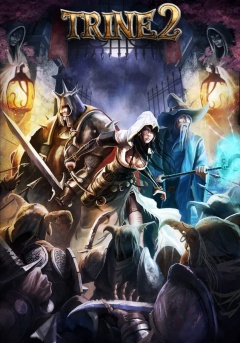 Growing up, playing a game cooperatively usually meant sitting down
with a friend in front of my NES playing Contra, Teenage Mutant Ninja
Turtles, or Chip 'n Dale Rescue Rangers. The game was either made easier
with a second player (twice as many bullets!), or twice as hard (fellow
chipmunks can be used as weapons!). But as games have evolved from the
living room to the internet, cooperative play has changed too.
Growing up, playing a game cooperatively usually meant sitting down
with a friend in front of my NES playing Contra, Teenage Mutant Ninja
Turtles, or Chip 'n Dale Rescue Rangers. The game was either made easier
with a second player (twice as many bullets!), or twice as hard (fellow
chipmunks can be used as weapons!). But as games have evolved from the
living room to the internet, cooperative play has changed too.
Portal 2 was designed with two campaigns in mind, one for the single player and the other for multiplayer, specifically a cooperative experience with no traditional way to communicate available. Both sets of levels were brilliant in their own right, and excelled in creating a unique undertaking. On the other hand, the original Trine was made for local gaming only. Friends gathered in front of the TV or monitor and lead the trio of heroes on their adventure.
Trine 2 introduces online co-op for up to three gamers, fixes many complaints from the first game, and features some of the most gorgeous graphics I've ever seen in a video game. I finally got to tax my video card. Steve and I played through the entire game together online without voice communication, here are our thoughts.
Tales of Monkey Island: Launch of the Screaming Narwhal
 After 2000’s somewhat disastrous Escape from Monkey Island, I was rather leery on returning to my beloved childhood point and click adventure series. Monkey Island 2: LeChuck’s Revenge was the first game I ever played in the genre, and The Curse of Monkey Island is still in my top 10 games of all time.
After 2000’s somewhat disastrous Escape from Monkey Island, I was rather leery on returning to my beloved childhood point and click adventure series. Monkey Island 2: LeChuck’s Revenge was the first game I ever played in the genre, and The Curse of Monkey Island is still in my top 10 games of all time.
LucasArts wasn’t too excited on bringing back Guybrush Threepwood either, but in 2009 thanks to TellTale Games, began publishing the five episodes of Tales of Monkey Island, beginning with Launch of the Screaming Narwhal. TellTale Games is the most successful episodic gaming developer around, and they seem to thrive when given an existing IP to adapt into their release format. Tales of Monkey Island would go on to become their best-selling series at the time.
I’ll be reviewing each episode individually as if they were being released one at a time. There’s a few reasons for this: if an episode really sucks, will I want to play on? I like the idea of being able to quit at any time. Plus, I’m a big fan of getting my ideas down on paper sooner than later, and feel like I can give each episode the time it deserves by reviewing it immediately.
Sleeping Dogs
 I like freedom in games. That being said, I love open world games-the ability to run around a virtual world, doing missions whenever I please, and I will give any open-world sandbox game a chance, from Toy Story to Saints Row. I fondly remember the “undercover cop” GTA rip-off True Crime series so ridiculous it was almost hard to take serious about ten years ago-yeah, the one that let you play as Snoop Dog. I soon found out that Sleeping Dogs, seemingly released out of nowhere this month, was the once-titled True Crime: Hong Kong, only having changed names due to legal reasons after switching publishers from Activision to Square Enix. While it may have once belonged in a line of True Crime games, TRUST ME- In no way, shape, or form is this anything like what I remember the True Crime series being like. (In a good way.)
I like freedom in games. That being said, I love open world games-the ability to run around a virtual world, doing missions whenever I please, and I will give any open-world sandbox game a chance, from Toy Story to Saints Row. I fondly remember the “undercover cop” GTA rip-off True Crime series so ridiculous it was almost hard to take serious about ten years ago-yeah, the one that let you play as Snoop Dog. I soon found out that Sleeping Dogs, seemingly released out of nowhere this month, was the once-titled True Crime: Hong Kong, only having changed names due to legal reasons after switching publishers from Activision to Square Enix. While it may have once belonged in a line of True Crime games, TRUST ME- In no way, shape, or form is this anything like what I remember the True Crime series being like. (In a good way.)
With Square Enix’s reboot, remastering and renaming of the True Crime franchise, now Sleeping Dogs, they have tooled what could prove to be one of the biggest surprise smash hits this year with tight gameplay all around and with a story more compelling than most of Rockstar or THQ’s gangster tales have ever felt. Here is my review of Sleeping Dogs for Xbox 360.
Stacking
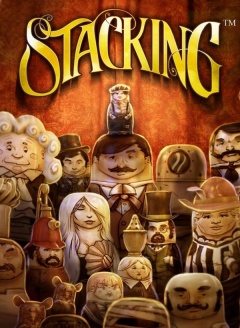 Well, this has been a long time coming.
Well, this has been a long time coming.
Stacking came out for Xbox Live and PlayStation Network in early 2011, and it immediately captured my interest. With characters based on the Russian stacking matryoshka dolls and the narrative devices of silent films of yesteryears, it was definitely a unique offering, though looking over Double Fine Productions’s history it’s clear that that’s their thing. Quirky mish-mashes: RTS and musical influences for Brütal Legend, Halloween outfits and RPG elements for Costume Quest, and summer camp and psychic abilities for Psychonauts. However, I just never got around to getting it due to my severe distaste for buying Microsoft Points, since the conversion rate of USD dollars to Space Bucks never seems to be in the buyer’s favor.
Flash-forward to July 2012, and the Steam Summer Sale has now concluded. I was able to snag this bite-sized adventure for a cool couple of bucks, as well as a slew of other titles. But for now, let’s play with dolls for an hour and see how things turn out.
The Shivah
 Have there been any mainstream Jewish video games? Outside of Bible Adventures, I can’t think of a single religious game that even a small percentage of gamers might recognize. It’s interesting: there are quite a few popular religious films such as The Ten Commandments, and religious music and television has certainly found its niche, but there has never been a video game or developer that religious groups have rallied behind.
Have there been any mainstream Jewish video games? Outside of Bible Adventures, I can’t think of a single religious game that even a small percentage of gamers might recognize. It’s interesting: there are quite a few popular religious films such as The Ten Commandments, and religious music and television has certainly found its niche, but there has never been a video game or developer that religious groups have rallied behind.
I could personally rattle off a dozen reasons why this might be the case, but it raises the question: does religion have a place in video games outside of being the caricatured bad guy in a game like Final Fantasy Tactics? Dave Gilbert of Wadjet Eye Games thought the answer was “yes” with his first paid point and click adventure game, The Shivah.
The Shivah stars Rabbi Stone in his short quest to uncover the truth about a recently deceased friend. It takes place inside synagogues and features a decent dose of Hebrew and Jewish themes. It isn’t heavy-handed in anything it does, this is simply the character and settings Wadjet Eye Games wanted to tell. Here’s my review of The Shivah, built in Adventure Games Studio.
